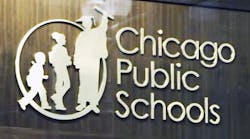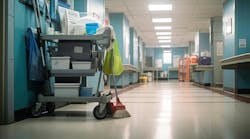At thousands of schools and universities, years of economic troubles have led to repeated budget cuts. The reductions typically fall disproportionately on maintenance departments, where cuts are viewed as less critical than those that directly affect classroom instruction.
And so nearly every facility manager at an education institution faces a dilemma: With fewer resources, maintenance and repairs of buildings and grounds must be carried out more efficiently, but because of fewer resources, schools and universities may be precluded from pursuing solutions that would bring about greater efficiency.
One of the best steps an education institution can take to manage its maintenance program more efficiently is to take advantage of technology with a computerized maintenance management system (CMMS). A key to making better decisions is having better information, and a CMMS enables facility managers to keep track of the space for which they are responsible and the workers who keep their school building operating.
Objective Decisions
Education institutions that don’t have a way to generate objective data about their maintenance needs may not be able to make wise decisions about prioritizing among an array of worthy projects. In a bureaucratic setting, managers may acquiesce to those who make the most noise or who are the most adept at political infighting, and work that is more critical to the health of the institution sits undone.
A CMMS that has amassed accurate and comprehensive information about the status of a school’s facilities and operations will provide managers with facts to refute the squeaky wheels who are clamoring for their projects to get to the front of the line.
Features
The availability of computerized maintenance management systems has grown as technology has advanced and computer systems have become more powerful.
"With time computers have become more powerful, less costly, and easier to use, and now provide tools to support improved maintenance practices," says The Whole Building Design Guide, part of the National Institute of Building Sciences. "Facility professionals now have the tools to manage the planning and day-to-day operations and maintenance activities required for a single facility or a large complex, providing all of the information required to manage the work, the work force and the costs, and provide management reports and historical data."
The guide lists some of the functions that may be included or desired in a CMMS:
•A way to enter and track locations of equipment so facility managers can monitor the life cycle of the equipment and assess its performance at specific sites.
•A place to keep accurate and detailed records of each piece of equipment, so managers can make cost-effective decisions about repairing or replacing.
•A module to track labor resources—records for all maintenance personnel, including their craft or trade categories. Some systems also can track skill levels and qualifications for each resource to help in planning and scheduling work.
•Safety plans, including tracking hazards and hazardous materials for multiple equipment and locations; associating safety plans to job plans and work orders; and printing safety plans automatically on work orders.
•A method to track inventory movement. The system also should be able to track item vendors, location of items, item cost information, and substitute or alternative items that can be used.
•Work requests. "The data entry screen should be designed for minimal data entry," the guide says. "…Data should be entered once, and pop-up tables in the system should eliminate the need to memorize codes."
•Work-order tracking. This should enable a user to have immediate access to information needed for detailed planning and scheduling, including work-plan operations, labor, materials, tools, costs, equipment, blueprints, related documents and failure analysis.
•A work management function, which lets a facility manager choose which labor to assign to specific work orders and when. The system would enable a manager to plan for future assignments and interrupt work already in progress to dispatch workers immediately for more crucial assignments.
•Capability to track preventive maintenance. The system should support multiple criteria for generating preventive maintenance work orders.
•A way to collect and store detailed information on utilities consumption, distribution, use, metering, allocation to users and cost.
•A database that contains the maintenance histories of the education institution’s facilities and equipment. It should contain summaries of preventive maintenance, repairs, rehabilitation, modifications, additions, construction and other work affecting the condition of the items.
•A way to track purchasing and enable managers to initiate the requisition of material based on a work order and track the delivery and cost data of the item when it arrives.
•A database that compiles information on maintenance contracts, including each contractor’s past performance, current loading and planned work.
Before choosing a CMMS, the Whole Building Guide recommends that managers be aware of other systems, such as financial or geospatial systems, that are in use elsewhere in the education institution that the CMMS will have to be compatible with. Schools also should be able to transfer existing data into a new CMMS system without any glitches.
Avoid Pitfalls
The guide also warns facility managers of several common pitfalls to be avoided with maintenance management systems:
•Schools should not select a system unless decisionmakers have a clear definition of requirements—what they expect it to do and how it will meet an institution’s specialized needs. Outside professional guidance, someone experienced in CMMS but not associated with any particular vendor or system, may be beneficial.
•Education institutions shouldn’t try to develop a CMMS in-house. "You will spend an inordinate amount of time and money designing a system that is likely already available on the market," the guide says.
•A CMMS should not be the system that employees rely on to get paid, otherwise it will get tied up every two weeks with payroll time entry.
•Avoid a CMMS that makes it difficult to enter data or lacks the flexibility to be upgraded or modified. Don’t acquire a system that workers with minimal computer skills will find difficult.
•Schools shouldn’t limit themselves early in the selection process to considering only one system. "Develop a short list and ‘road test’ each product," the guide says.
•Look for systems that have a proven track record with institutions similar to yours.
Sidebar: Who needs CMMS?
Small school systems with only a few facilities may be able to manage their maintenance programs adequately without using a CMMS. But many school districts or college campuses are large enough or grow to the point that their operations will benefit from technological assistance.
How big? About 500,000 square feet, according to the U.S. Department of Education’s Planning Guide for Maintaining School Facilities.
"At that point, facilities, assets, staff, and scheduling become complex enough to warrant an investment in CMMS software, equipment, and staff training," says the guide. "Moving to a CMMS requires resources, manpower and, above all, support from management at all levels of the organization."
Kennedy, staff writer, can be reached at [email protected]. Follow him on Twitter @SchoolhouseBeat.



